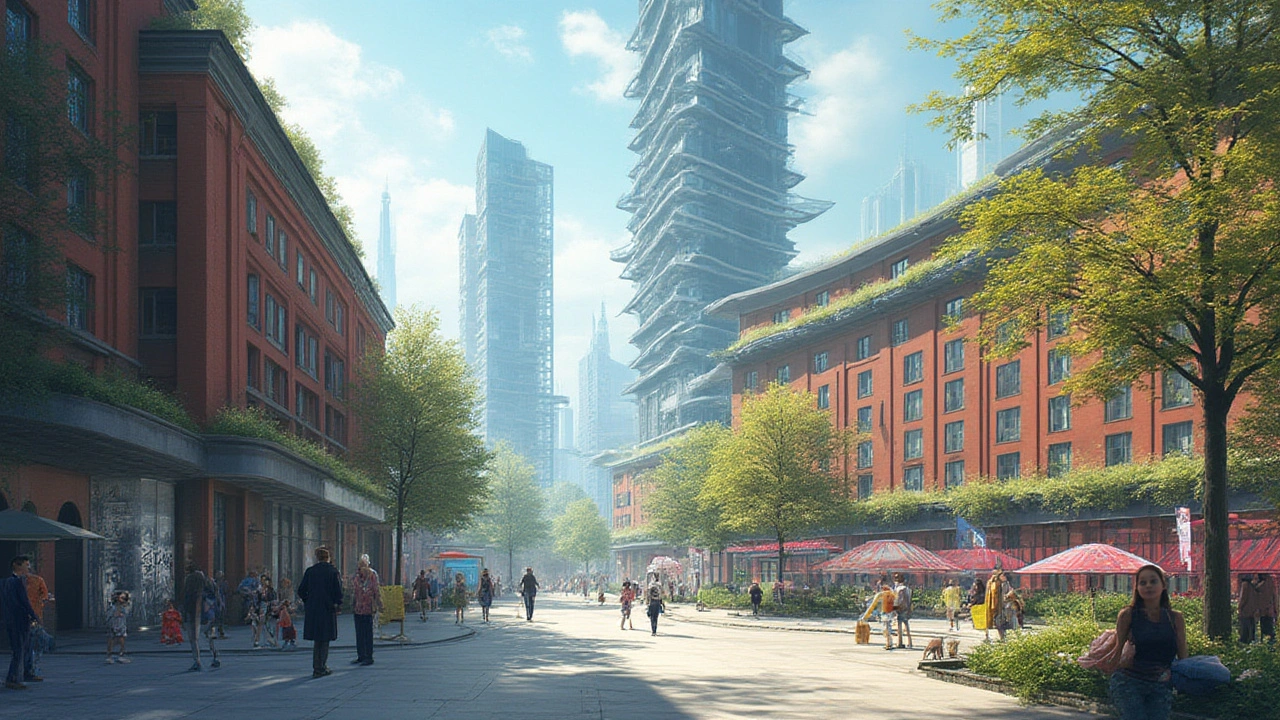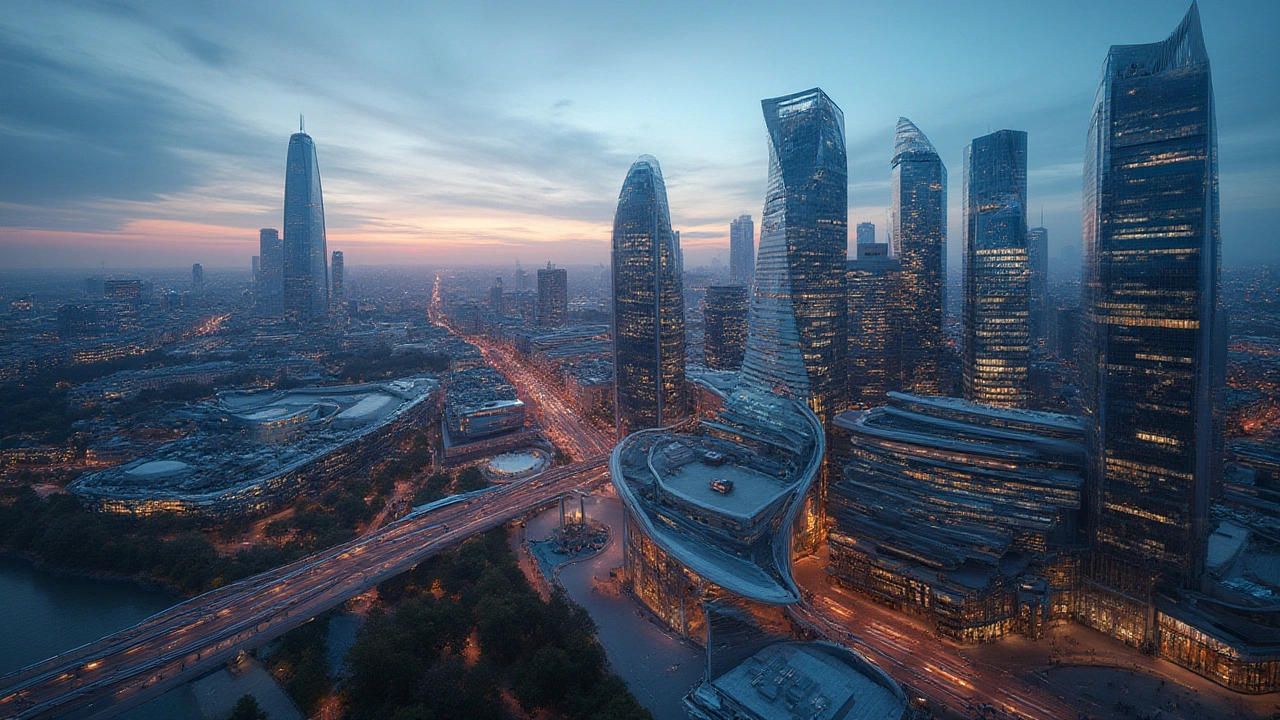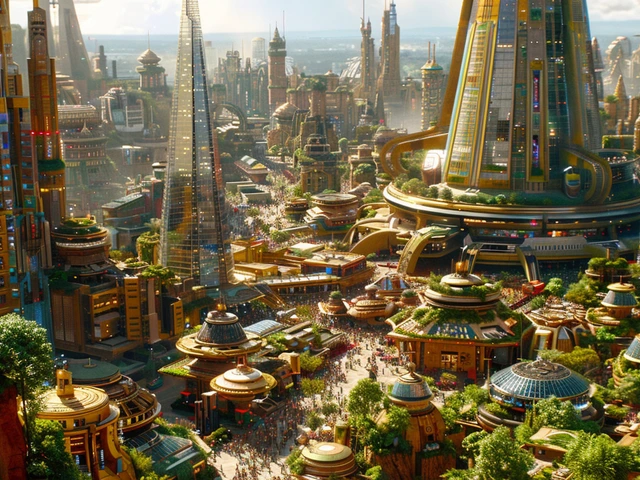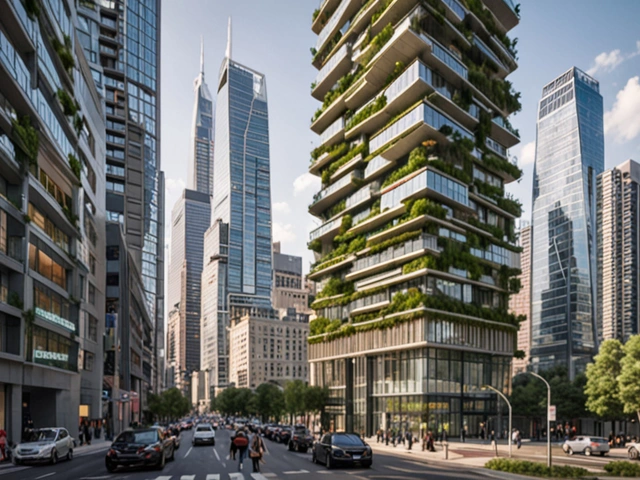If someone told you, forty years ago, that cities would one day be dotted with buildings that looked like they were dreamed up by someone obsessed with Lego, circuit boards, and jet engines—you probably would’ve laughed and poured them another drink. But here we are in 2025, and the high-tech vibe is more than alive; it's taking over. Melbourne, my own wild city, has become a sprawling canvas of steel exoskeletons, shimmering glass, and buildings that seem to defy logic and gravity. There’s something addictive about the sheer boldness—the way structures today show off their guts, like buildings are happy to flaunt their bones and wires just as much as their skin. This isn’t about hiding the machinery, it’s about putting it on display. High-tech architecture pushed open a door to an era where buildings don’t just stand, they perform. So, how did we get here, and what makes this aesthetic so magnetic?
Origins: How High-Tech Architecture Threw Out the Rulebook
Picture the late 1970s and early 80s. Punk rock was on the radio, and architects like Norman Foster, Richard Rogers, Renzo Piano, and Michael Hopkins were quietly deciding that modernist glass boxes weren’t enough. Their buildings needed to breathe, flex, and show their inner workings. The Pompidou Centre in Paris, finished in 1977, was the greatest trick ever played on polite architecture—pipes, ducts, and escalators brazenly running outside the walls, color-coded like a subway map. This wasn’t an accident, it was the whole idea. The 'inside-out' approach became a legend overnight, pulling engineering and artistry into a loud, crazy dance. Then came Foster’s HSBC Building in Hong Kong (completed in 1985): the first skyscraper made entirely from parts shipped in like a giant kit, assembled on-site, wrapped in stainless steel and glass. It could be dismantled and moved, Lego-style, if anyone actually wanted to try. High-tech architecture declared itself with visible supports, webs of glass, and every wire or tube right out in the open. Buildings finally got to be honest—and kind of cocky—about how they worked.
The Anatomy of High-Tech: Glass, Steel, and Bravado
Here’s the wild thing: high-tech buildings don’t just use technology, they become technology. Walk around London’s Lloyd’s building (Rogers, 1986) or Melbourne’s own ANZ Centre, and you’ll be brushed by elevator shafts on the outside, pipes in neon colors, and ceilings you can see through, exposing cable trays and sprinkler lines. It’s not about perfection or hidden finishes—the whole building is a living circuit board. One classic trick is the ‘exoskeleton,’ where support beams move outside the walls for maximum internal space. The result? Gigantic open floors, almost no need for inner columns, with sunlight pouring in from everywhere. High-tech also loves prefabrication. Buildings can be manufactured as parts, then bolted together on-site faster and cleaner than with old-fashioned materials. This approach cuts down risk, saves time, and allows for jaw-dropping design flexibility—a win-win engineered for speed and wow-factor. And if you’re wondering about the steel and glass, it’s not just for show. Transparent facades mean more daylight, lower energy use during the day, and interiors that feel connected to the city. Double-skin facades (two glass layers with an air gap) have boosted insulation so much that even tall gleaming towers can be surprisingly eco-smart. The difference is clear when you stand inside buildings like Madrid’s Torre PwC or the Leadenhall Building in London—the boundary between outdoors and in just melts away.
High-Tech Icons That Changed Expectations
Think about global landmarks today, and you’ll spot plenty of high-tech fingerprints. The Shard in London, designed by Renzo Piano, slices up the sky with glass facets twisting 310 meters high. Its shape could only exist with state-of-the-art structural systems, and those triple-glazed windows keep energy use low. High-tech isn’t only for monster towers, though. The Eden Project in Cornwall, UK, takes the aesthetic into nature: fifty geodesic domes of hexagonal glass cells house rainforests and Mediterranean gardens in a frosty quarry. The ‘centre court’ at Wimbledon has a retractable roof that slides shut to save the grass and the match when rain threatens—again, the mechanics aren’t tucked away, but celebrated in the design. Even airports have jumped on board. Just look at Beijing Capital International Airport’s Terminal 3, a masterpiece of open spaces, visible steel beams, and sunlight channeling right onto the main halls. These places win people over not only because they’re bold or futuristic, but because they’re honest. Every cable, glass panel, and strut is out there, unashamed, part of the story.
Tech-Savvy Living: How Smart Features Shape Modern Architecture
High-tech today doesn’t just mean flashy structures; it means smart, sustainable, and adaptable spaces. You’d be amazed at what some modern buildings pull off: light sensors that adjust windows to the sun, facades that respond when it gets hot, rainwater-harvest systems hidden in plain sight, and rooftop solar arrays practically woven into the design. In Melbourne’s Docklands, offices adjust lighting and temperature automatically, saving energy and keeping workers happier—no more foggy afternoons or freezing cubicles. Some buildings have modular walls that can move or fold to create new layouts in under an hour. And with internet-connected control rooms, managers can monitor everything from fan speeds to window openings in real time, slashing costs and boosting comfort. The best part? This isn’t only for high-budget towers. Houses, schools, and even bus stops are getting high-tech makeovers, with pre-built solar panels and transparent insulation available to everyone. Adriana, my wife, even jokes that our next home might have robot window washers wired into its DNA. At this point, it’s not a fantasy—you can buy robotic cleaning units for high-rise glass walls, and next-gen fire safety systems are already talking to first responders before they reach the scene. All these smart upgrades don’t just look cool; they make daily living smoother, greener, and often more affordable.

Future Trends: What’s Next for High-Tech Architecture?
Fast-forward a few years, and the horizon is full of wild possibilities. Artificial intelligence is weaving its way into design, automating space planning to fit how people truly live and work. Robots are already assembling modular apartment complexes in hours, not months. We’re seeing a burst of bio-materials—glasses that tint themselves in sunlight, steel with nano-coatings that heal their own scratches, and even building bricks made with bacteria instead of concrete. Sustainable tech and eye-popping style are rewriting the city blueprint. There’s a push for integrating vertical gardens right into the facade, letting buildings clean their own air and cool the city at the same time. More structures will generate their own solar, wind, or kinetic power. Some projects in Singapore and Tokyo even promise their towers will soon be ‘net-zero’—meaning they consume no more energy than they produce. Digital twins—virtual computer models of whole buildings—are already changing the way operators keep track of every cable, pipe, and light fitting in real time. If there’s a fault, they know before anyone else. Think of the time and money saved, not to mention the pure practicality of it all. A few architects are taking this even further, experimenting with buildings that literally move—giant steel and glass petals that open to the sun during the day, close like flowers at night, and track the seasons across the year. Buildings now don’t just house us, they learn from us, adapt with us, and sometimes surprise us.





